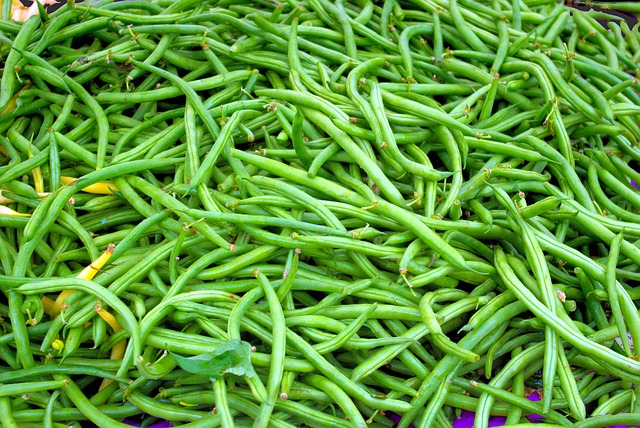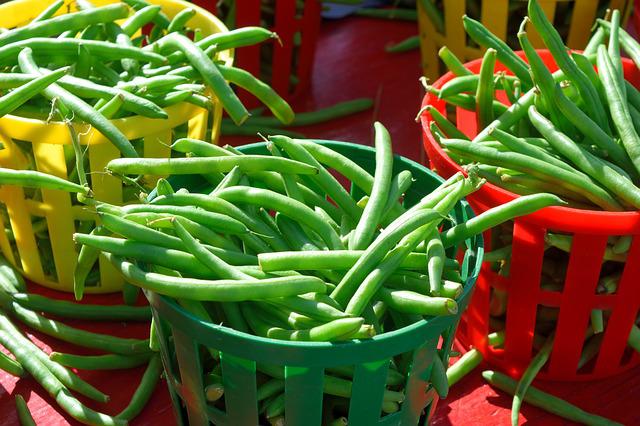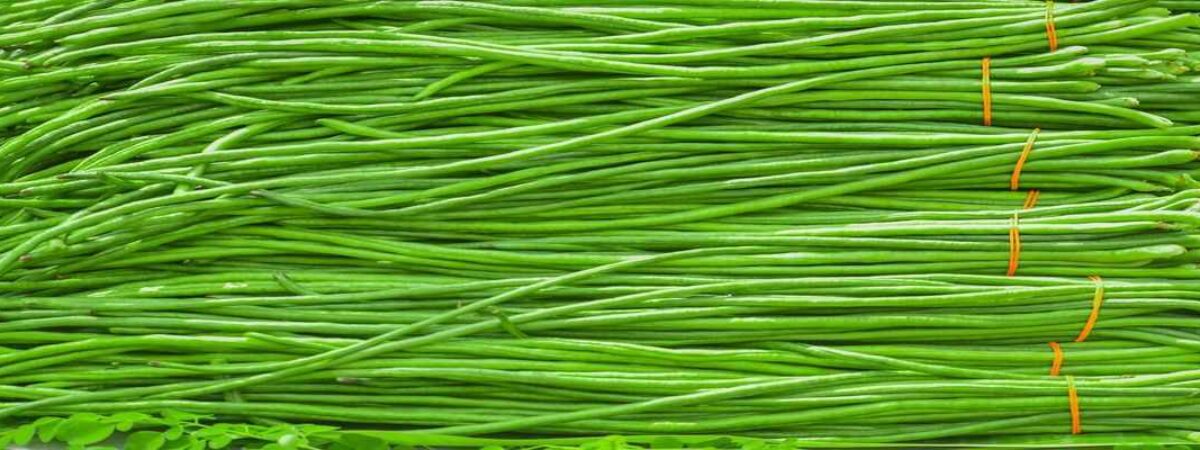Green beans or otherwise named the snap beans–are tender annual plants that are best planted shortly after the last frost in spring. These are grown for the purpose of fresh eating or for canning.
The color of beans can vary depending on their variety. Green beans are green in color but other snap beans can be yellow, purple, or speckled depending on the variety. Yellow snap beans are otherwise named wax beans.
The pod size of a bean may also vary depending on the variety. some are just 3 to 4 inches (7-10cm) long others are 6 to 8 inches (15-20cm) long or longer in size and pods can be round or flat.
Beans are considered one of the easiest crops to grow in a home garden. Undoubtedly, green beans are the staple of so many vegetable gardens because they are so easy to grow even in limited space and incredibly productive.
Plant a bean seed, and it will almost certainly grow and produce a generous crop with little effort, easy-care, and low maintenance on the part of the gardener. However, if you want the biggest and best harvest possible, you must be aware of all the things about this and their growing and caring guide.
So let’s dive into the article below and find out how to grow and care for beans.

Varieties of beans to grow
The varieties of beans are numerous. There are endless varieties to be considered before planting. However, some of the important varieties of this plant are given below
Chinese or Asian long beans or yardlong or asparagus beans
This variety of bean bears slender, 1- to 2-foot pods. Some of the popular types of this variety are Orient Wonder, Red Noodle, and Yardlong.
French green beans or filet or haricots verts
The French green beans are one of the popular varieties of this plant that bears thin, tender, 3- to 5-inch pods. Some of the popular types of this variety are Calima, Masai, or Maxibel which can be grown in a container.
Italian/Romano:
This variety of beans bears wide, flat 6- to 8-inch pods even in the hottest summers. Some of the popular types of this variety are Early Bush Italian, extra-large-pod Jumbo, or Roma II.
Purple beans:
This variety bears 5- to 6-inch pods that are deep-purpose when raw and turn green when cooked. Some of the important types to consider in this variety are Amethyst, Royal Burgundy, or Velour.
Snap beans or aka string or stringless
Snap beans are the popular varieties that bear slender, 5- to 7-inch pods. Some of the popular types to consider in this variety is Blue Lake 274 (bush), heirloom Kentucky Wonder (bush or pole), or Provider (bush).
Yellow wax beans:
The yellow wax beans are the popular varieties of this plant that bear 5- to 7-inch pods have a and milder flavor than green varieties. Some of the popular types to consider in this variety is stringless ‘Cherokee’ (bush), classic ‘Golden Wax’ (bush), or ‘Monte Gusto’ (pole).

Planting condition of beans
Beans require well-draining soil with a normal fertility level and an acidic to neutral pH that is up to 6.0–7.0. They don’t typically need any supplemental fertilizer as they can fix their own nitrogen in the soil. However, if your soil is heavily poor, then it should be amended with aged manure or compost in the fall before planting or about a week before planting in the spring.
This plant don’t like disturbing roots. So set up any supports for your pole beans plant before planting.
When to plant beans?
Beans grow best when they are planted direct-seeded outdoors. You can sow the seeds any time after the last spring frost date has passed and when the soil has warmed to at least 48°F (9°C). Don’t plant it too early. Planting it too early as cold, moist soil may delay the germination procedure and could cause the seeds to rot.
To get started with your planting, place black plastic or landscaping fabric over your garden beds to warm the soil prior to sowing seeds.
If you are planting the seeds indoors, do not start with planting the seeds indoors. Due to the fragile roots of the plants, they may not survive transplanting. Besides, they’re such fast growers that there’s no real advantage to starting them as early indoors.
How to plant beans?
If you are planting the bush beans, sow the seed 1 inch deep and 2 inches apart in rows 18 inches apart. If you are planting the pole beans, consider planting them 1 inch deep, and placing them around supports.
Plant your seed a little deeper in sandy soils, but not too deep. if the soil is too deep, heavy, dense, packed, and/or mulched, Seedlings cannot push through the soil. they will break their necks in the process of trying to emerge.
In case you are planting pole beans, set up trellises, stakes, or other supports prior to planting so that the plants’ fragile roots are not disturbed.
For continuous harvesting that lasts throughout the summer, sow the bean seed every 2 weeks. If you’re going to be away and unable to harvest continuously, consider skipping a planting as it does not wait for anyone.
Besides, you can Practice crop rotation like planting crops in different areas each year to avoid the build-up of pests and diseases in one spot.
How to take proper care of beans?

Light
The bean plant requires full sun to thrive and for the best yield. Full sun also helps the plants to stay dry and less likely to be affected by certain pests and problems, such as fungal diseases.
Soil
Bean plants like to grow in organically rich loamy soil that has a slightly acidic pH. Good soil drainage also is also an important key in choosing soil. Remove weeds from the soil before planting to prevent competition between the plants for soil nutrients and moisture. As they grow gradually, weed carefully around the plants, as their shallow roots can be easily damaged.
water
Common bean plants require regular watering of 1 inch of water per week. You can use a drip irrigation system for supplemental watering and avoid splashing soil onto the leaves, which may lead to some soil-borne diseases.
To decide if the plants need water, stick your finger about 1 inch into the soil near the base of the plant. If the soil is dry, immediately water the plant if your plants don’t get the right amount of water, they will stop flowering. Bean plants have shallow roots. So you also can mulch it which can help to keep the plant cool and preserve moisture in the soil.
Temperature
The Bean plant requires the temperature of the soil to be 70 and 80 degrees. If the temperature of the soil is below 60 degrees, the seeds of the bean will germinate more slowly and may be susceptible to rot.
Apart from the soil temperature, The plants grow best when the temperature of the air is between 65 and 85 degrees. If they are exposed to extreme heat in summer, they tend to stop flowering. So you need to keep them well-watered, and they will resume flowering and production when temperatures will be cool. Moreover, they can grow in all humidity conditions if they are properly watered.
fertilizer
You may that bean plants play an important role in fixing nitrogen in the soil, so avoid a high-nitrogen fertilizer, if you are willing to add fertilizer. Instead, you can use a 10-20-10 fertilizer to feed the plants throughout the growing season, following the product directions to use.
Conclusion

As you read the article this far, you might be aware of the growing and caring guide of the beans.
A freshly picked bean is not only tastier to eat but also adds a healthier and more proteinaceous spark to food. That’s the main reason for considering growing this plant in your garden.
Then what are you waiting for?
Grow it in your garden and have the healthier food in your dinner table.
You may also like to read






